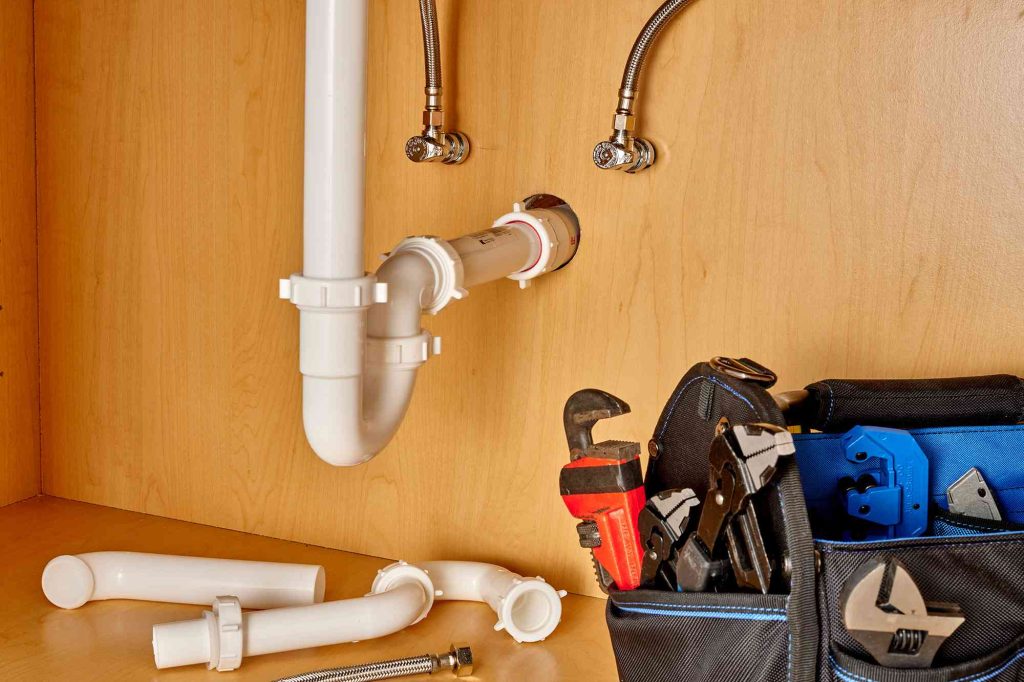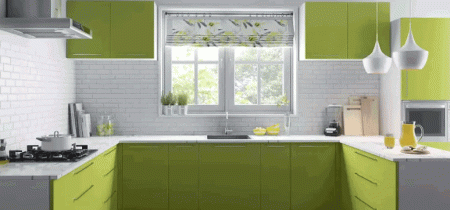Hiring a plumber for projects around your house is a great idea because plumbers can do the job lightning fast—essential when it’s a time-sensitive repair. Plus, plumbers are experienced professionals who do this work every day and who know the plumbing code. So keeping your repairs in check is second nature to them. But you don’t always need to hire a plumber for every project. Some plumbing projects are definitely DIY and can be handled by most homeowners.
-
01
of 10Replace a Toilet
If you are capable of moving a toilet around, you are capable of replacing it. After all, that’s the hardest part of toilet replacement. Once you have the old toilet removed, it’s just a matter of cleaning up the closet flange, adding the new wax ring, and setting the new toilet in place. After you tighten the bolts at the base of the toilet and hook up the water supply, you’re up and running, literally. The only obstacle might be if the current closet flange is so rusted that it cannot be used again. In that case, you may want to hire a plumber to install a new closet flange on a concrete slab floor. If you have a wood subfloor, installing a new closet flange is also a DIY project.
-
02
of 10Install a Dishwasher
Much like replacing a toilet, installing a dishwasher is more about moving the bulky unit in place than about complicated plumbing hookups. You’ll need to first remove the existing dishwasher. Then, with the new dishwasher near but not in the installation bay, make the electrical and water supply and drainage hookups.
-
03
of 10Add Pipe Insulation
Foam pipe insulation is valuable to preserving the warmth of the water in the supply pipes. That way, the next time you draw on the hot water side from a sink, shower, or tub, you waste less water while you wait for the hot water to arrive. Wherever you can see exposed hot water supply pipes, you should wrap them with inexpensive foam pipe insulation.
-
04
of 10Install or Replace a Garbage Disposer
When installing or replacing a garbage disposer by yourself, the heavy-lifting of this project literally is heavy lifting. Units can weigh 10 to 15 pounds—even up to 20 pounds. Having a partner help hold the disposer while you secure it to the bottom of the sink helps immensely.
Continue to 5 of 10 below. -
05
of 10Fix a Broken Pipe
It’s easy to panic when you have a broken plumbing pipe. But the first thing to remember is that your home always has a main shut-off valve located somewhere on the perimeter of the home. You might even be lucky enough to locate an intermediary shut-off valve near the broken pipe.
Once that’s done, though, you now have time and clarity of mind to assess the situation. With only a few simple tools and inexpensive materials, you should be able to fix the pipe by yourself. A mid-run copper pipe that has sprung a leak can be cut on both sides of the break point and removed. You can join PEX plastic pipe to both sides of the copper with push-fit fittings or crimp style fittings. Alternatively, you may decide to install a lever shut-off valve instead of a piece of pipe. This does need to be located in an exposed location, though.
-
06
of 10Install or Replace a Faucet Aerator
A faucet aerator is a small device that screws onto the end of a faucet and which introduces air into the stream of water. This helps the water feel smoother and softer, and it makes the water stream easier to use. Simply unscrew your current faucet aerator counterclockwise. If the screen is clogged with sediment, tap it out upside down until it is clean, then replace. Otherwise, faucet aerators are inexpensive enough that it’s often worth your while to purchase a new one and install it.
-
07
of 10Replace a Showerhead
Replacing a showerhead can be done entirely by hand. Standing on a dry level spot in front of the showerhead, turn the showerhead out counterclockwise with your hand. If you do need assistance, you can use channel lock pliers to get it started. Add some Teflon tape to the shower discharge pipe, wrapping it clockwise on the pipe, then replace the showerhead.
-
08
of 10Fix Low Shower Water Pressure
Low water pressure in the shower can be annoying on those mornings you really need to get ready quickly. Fortunately, fixing the water pressure might be as simple as removing your current water restricting showerhead and replacing it with a new showerhead. Or the showerhead might be clogged with sediment, in which case you can soak it in vinegar.
Continue to 9 of 10 below. -
09
of 10Replace or Reseal a Tub Drain
The tub drain can be removed using a screwdriver and pliers. If you have time, run down to the home center or hardware store to buy a tub drain remover tool. Carefully turn out the drain counterclockwise, then set it aside. A clay-like substance called plumber’s putty should be placed under the tub drain before you turn it back into place. Without this putty, the tub will leak. So, be patient with this step and make sure that there are no gaps between the putty and the tub.
It is best to roll the putty out into 3/8-inch rope-like pieces and press them onto the tub around the drain hole. Replace the drain, tighten it, and wipe excess putty with your finger. Some drains will have a lever operated plug. This usually lifts right out. The rubber gasket can be replaced if the tub is not holding water well.
-
10
of 10Caulk a Tub
Occasionally, the caulk on a bathtub will get too moldy and mildewy to be cleaned. At that point, the only solution is to remove the caulk and recaulk it. Be sure that you have removed all traces of the previous caulk. Add painter’s tape on either side of the intended caulk line to avoid spreading the caulk onto the rest of the tub or tile surround. Squirt the caulk with a caulking gun, following with your finger to smooth it into the seam. Be sure to remove the tape before the caulking dries for a nice, even joint.
Read the full article here














